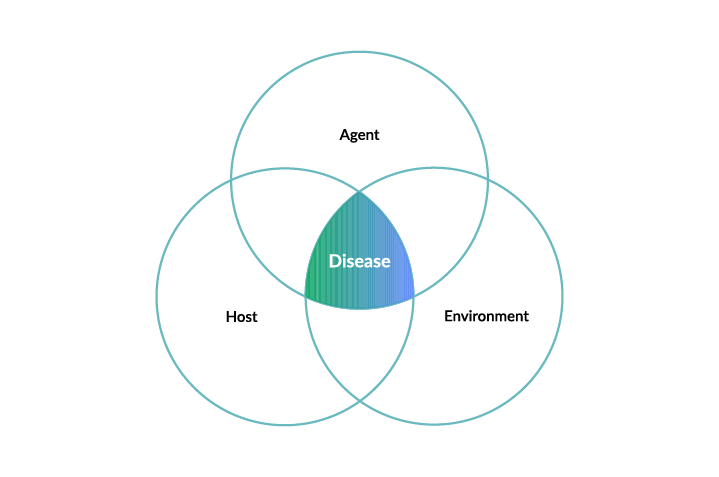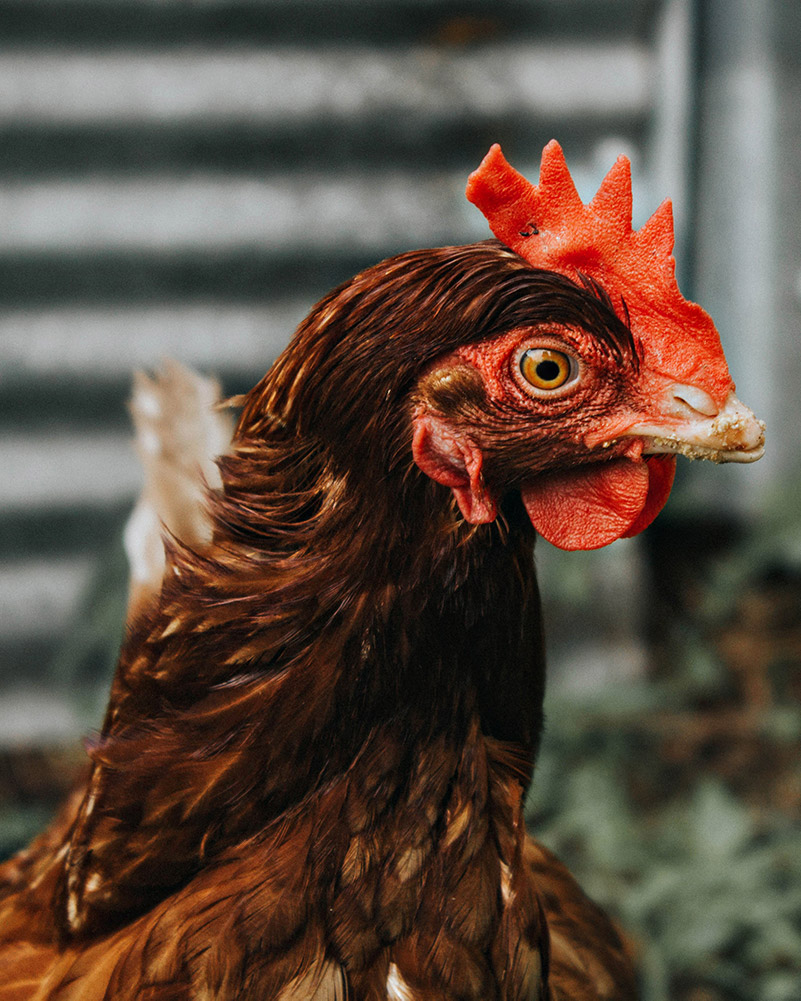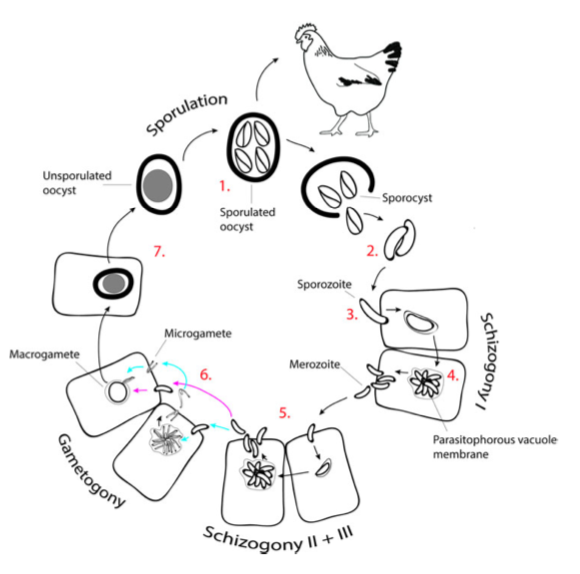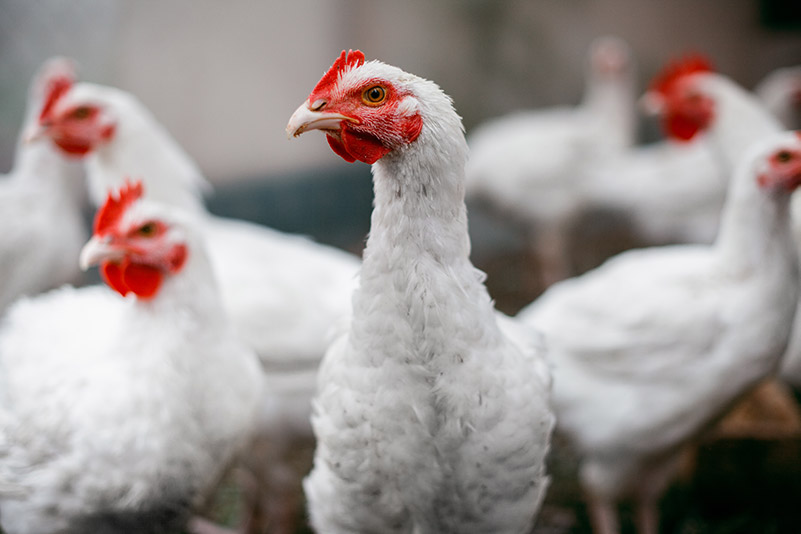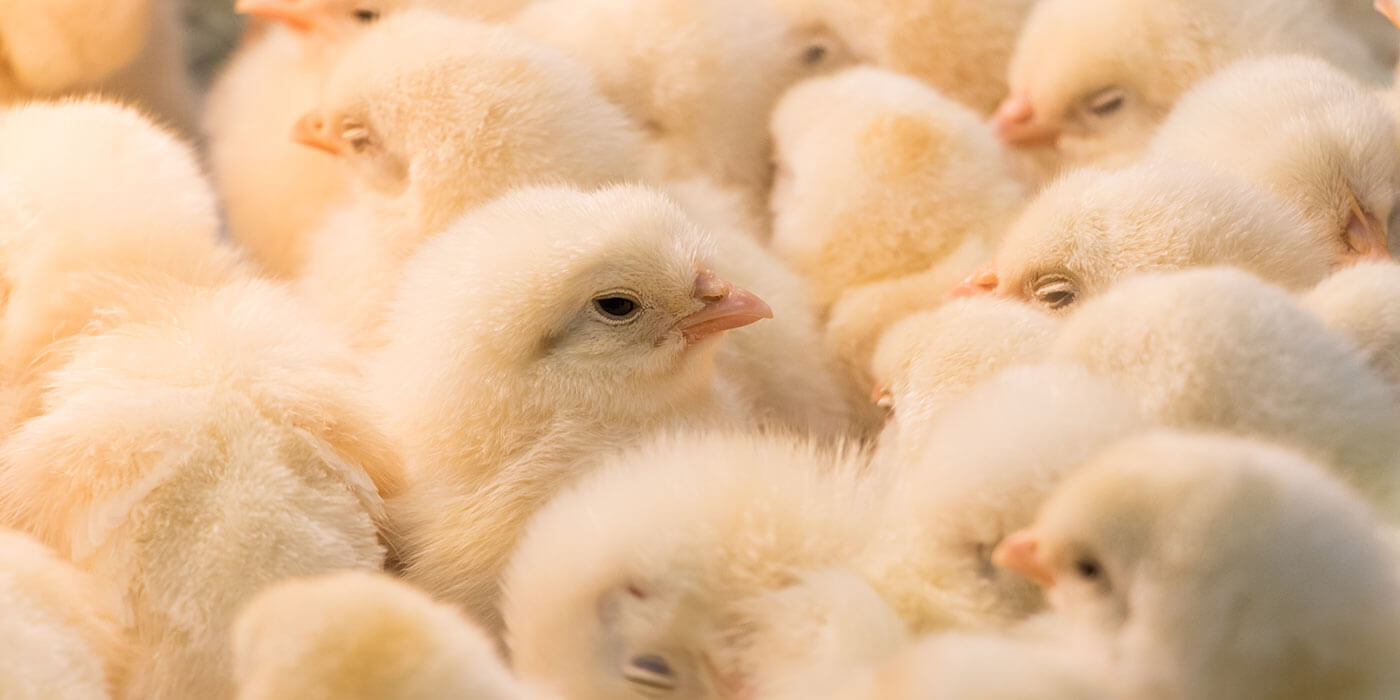Section 3 | An Overview of Coccidiosis
Industry
Page 19 /
What’s Causing Coccidiosis: Risk factors
Similar to necrotic enteritis, a combination of host (e.g. bird), agent (e.g. Eimeria), and environmental (barn) factors are responsible for causing coccidiosis. This combination of factors is called the epidemiological triad. When all the factors combine in a certain way (typically when the effects of the agent and environment overwhelm the immune system of the host), disease will occur (See the figure below).
To combat coccidiosis, you must have an understanding of each factor. Armed with this understanding, you can evaluate your management and environment to prevent this disease
Agent Factors: What’s the Deal With This Bug?
Coccidia is present around the world, with many different species of Eimeria causing disease in domestic and food-producing birds. The main species of coccidia are Eimeria necatrix and Eimeria tenella, as they are the most infective. The presence of Eimeria can also play a role in disrupting the gut microflora making birds more susceptible to necrotic enteritis. For more information on necrotic enteritis and agent factors, check out our FAAST Review page here.
Life Cycle of Eimeria
Despite the differing species, all Eimeria infecting poultry have similar life cycles (figure below). Eimeria is shed in the feces of an infected chicken and is able to survive in the environment for a long period of time. When it is exposed to air, moisture, and warmth, Eimeria will begin to develop into an infective state, where it, if ingested by a chicken, will cause damage. As these microscopic parasites move through the small intestine, they are digested by enzymes that allow Eimeria to change its structure to invade the cell lining of the intestinal tract where they will begin to replicate. At the end of the replication stage, Eimeria will be shed into feces, which will continue the cycle over again. Ultimately, this will lead to extensive destruction of the cells lining the intestinal tract leading to some of the classic clinical signs of coccidiosis2. This infectious process can be quite rapid, with the time from infection until the completion of the life cycle being 4-7 days.
As with all infectious diseases, the more a pathogen is present (more animals shedding in their feces) the greater the opportunity for animals to ingest an oocyst and become infected.
You can find a video explaining the life cycle of Eimeria here:
Eimeria Biological Cycle: an example of perfect complexity in biology
Host Factors: The Role of the Chicken
Age
All ages of birds are susceptible to developing coccidiosis, however, young birds are more susceptible to infection than older birds, where disease usually resolves around 6-8 weeks of age5. Younger birds have not fully developed their immune system; it can become easily overwhelmed when environmental conditions favour the spread of Eimeria, increasing the chances a bird will become infected.
Chick health at placement can set the stage for the health and performance of your flock. Watch this video based on research by Dr. Martine Boulianne of the University of Montreal:
Chick Champs Brooding Method
Genetics
Similar to necrotic enteritis, certain genetic varieties of birds show resistance to Eimeria as their immune systems have an improved ability to fight an infection. Layers are also more susceptible to coccidiosis than broilers. More research and understanding is needed to develop commercial varieties of birds, however, this is being further explored as a way to reduce the burden of coccidiosis6.
Other Disease
Diseases that cause suppression of the immune system can also increase the risk of having clinical disease caused by coccidiosis. Specifically, Marek’s disease virus and infectious bursal disease virus will increase a bird’s susceptibility to Eimeria. These animals may not be able to sustain good production as well as defend themselves against these pathogens.
Check out some of the Emerging Technologies that might help to optimize and maximize a bird’s immune system to help protect themselves against offending pathogens.
Environmental Factors: The External Factors
Housing
As the parasite Eimeria is commonly found in the environment, are easily disseminated in the poultry housing environment, and have large reproductive potential, it is extremely difficult to prevent the exposure of chickens to Eimeria. This is why it is so important to clean out all litter between groups, disinfect, let the area dry, and fill the housing area with fresh litter prior to placing a new crop of birds3. Feeding and drinking systems that are more difficult to clean are also associated with an increased risk of coccidiosis4. In addition, ensuring that the litter is dry is essential, as high moisture content will increase the numbers of infective Eimeria7.
Ask the experts:
Canadian experts all agree: don’t reduce down time! Maintaining approximately 2-3 weeks between crops of birds will significantly reduce antimicrobial use and therefore resistance. Reducing down time may allow some extra birds through the barn every year, but at what cost does this come? Consider how exposing chicks with naive immune systems to the bacterial flora from older birds might impact them and their health.
Another important area to ensure complacency does not arise is in biosecurity between barns on the same premise. It can seem inconvenient to change clothing between barns (say, if multiple barns had birds placed within a short period) but this can have devastating consequences. Keep bugs that aren’t present out, and keep the present ones in and away from your other birds.
It is important to consider biosecurity measures for the personnel that work on the farm. Clothes and boots, disposable gloves, and personal protective equipment should be cleaned or changed regularly, and no equipment should be shared between facilities to limit the spread of this pathogen3,4.
For more information on recommended practices for practicing, improving, and maintaining good biosecurity on your farm, check out this document:
National Avian On-Farm Biosecurity Standard
When considering the epidemiological triad model (host, agent, environment), you can appreciate how the environment plays a role in Eimeria’s ability to spread and infect animals. Reducing the number of oocysts in the environment means birds are less likely to ingest them, and gives the pathogen less opportunity to infect an animal.
Nutrition
The nutrition provided to birds is also another factor that can contribute to susceptibility to develop coccidiosis. Specifically, these nutritional factors have been associated with a higher risk of developing coccidiosis7:
Ask the expert:
We spoke with a Canadian veterinarian that works in all aspects of the supply chain. With regards to nutrition, she recommends that producers ensure that birds are fed lower protein and energy diets, while ensuring that their feed contains highly digestible protein sources (an example of a poorly digested protein source is feather meal).
Average daily gain is one aspect of poultry production that producers can have significant influence over. It has also been recommended that producers do not try to accelerate growth too quickly. This can predispose birds to poor gut health leading to diseases such as coccidiosis and necrotic enteritis. Having birds arrive at processing plants a few days later with slower growth can reduce treatment costs and performance losses. Any added costs, such as feed and electricity, will be offset by reduced treatment costs, veterinary costs, and performance losses.
References:
- Nesse, L.L., A.M. Bakke, T. Eggen, K. Hotel, M. Kaldhusdal, E. Ringo, S.P. Yasdankhah, E.J. Lock, R.E. Olsen, R. Ornsrud, and A. Krogdahl. 2019. The risk of development of antimicrobial resistance with the use of coccidiostats in poultry diets. European Journal of Nutrition and Food Safety. 11:40-43.
- Burrell, A., F.M. Tomley, S. Vaughan, and V. Marugan-Hernandez. 2020. Life cycle stages, specific organelles and invasion mechanisms of Eimeria species. Parasitology. 147:263-278.
- Allen, P.C., and R.H. Fetterer. 2002. Recent advances in biology and immunobiology of Eimeria species and in diagnosis and control of infection with these coccidian parasites of poultry. Clin Microbiol Rev. 15:58-65.
- Graat, E.A.M., E. van der Kooij, K. Frankena, A.M. Henken, J.F.M. Smeets, and M.T.J. Hekerman. 1998. Quantifying risk factors of coccidiosis in broilers using on-farm data based on a veterinary practice. Prev Vet Med. 33:297-308.
- Dalloul, R.A., and H.S. Lillehoj. 2006. Poultry coccidiosis: recent advancements in control measures and vaccine development. Expert Rev Vaccines. 5:143-163.
- Smith, A.L., P. Hesketh, A. Archer, and M.W. Shirley. 2002. Antigenic diversity in Eimeria maxima and the influence of host genetics and immunization schedule on cross-protective immunity. Infection and Immunity. 70:2472-2479.
- Williams, R.B. 2010. Intercurrent coccidiosis and necrotic enteritis of chickens: rational, integrated disease management by maintenance of gut integrity. Avian Pathology. 34:159-180.
